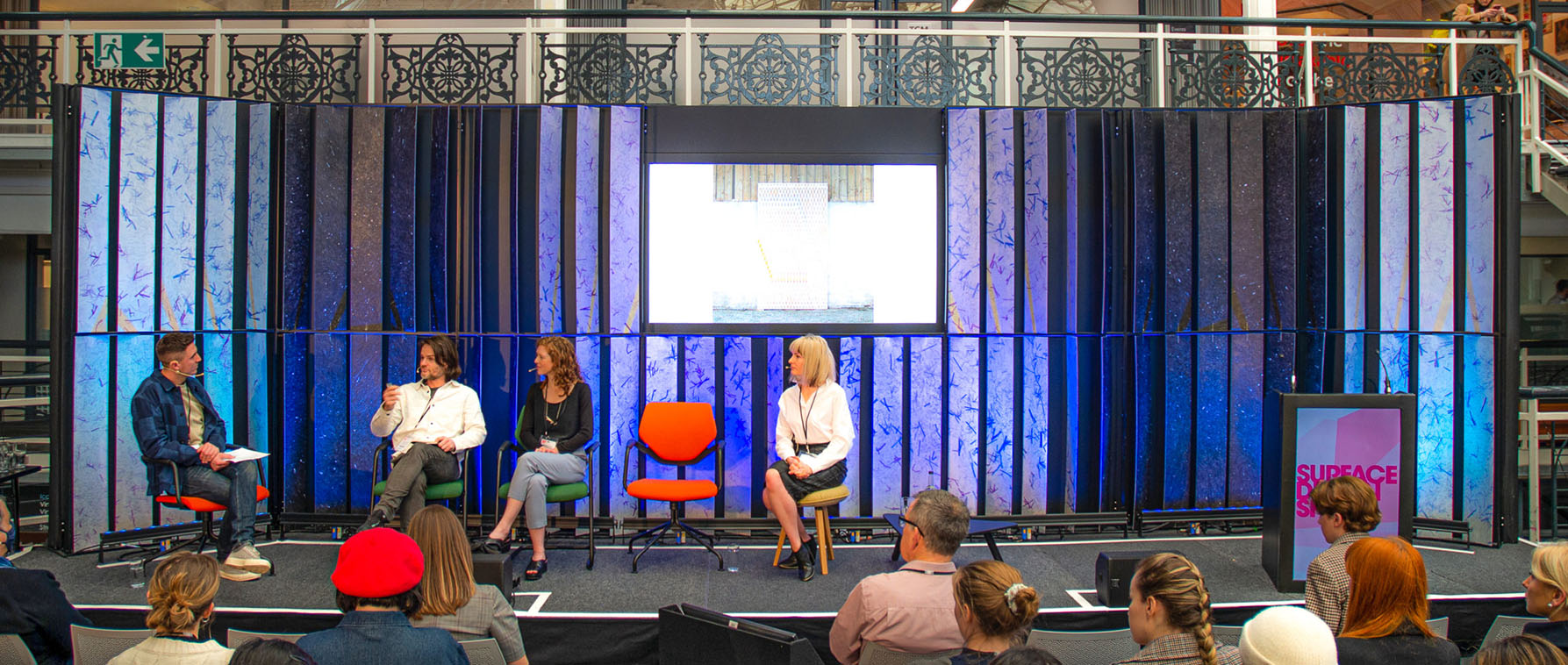
Summarised by Roddy Clarke at the top of our SDS22 panel discussion: Materials Matter, “As we strive towards a circular economy, the roles of both natural and synthetic materials are being closely analysed. While the inherent positive qualities of many natural ingredients stand out, designers are also re-evaluating a variety of synthetic materials and bringing to light their importance in the design and architectural worlds. So, is the argument about natural vs synthetic? Or is it our application of materials that should be the cause for concern as we try to create a greener future for all?”
In the latest installment of our Plastics Unpackaged series, our directors Rosalie and Adam; Smile Plastics’ project manager & founder of Evan James Design, Emily Skinner; founder of furniture maker, Another Country, Paul de Zwart; and design journalist, Roddy Clarke, continue the discussions from the Surface Design Show to explore how materiality and our relationship with it can secure a more sustainable future.
A change in mindset
“I'm a massive advocate for natural materials. I always have been,” states Roddy Clarke, “but over the last few years, my mindset on synthetic materials is changing, and that is thanks to the work of many designers who are bringing new innovations to the fore.”
“We remain big fans of wood and natural materials,” seconds Paul de Zwart of Another Country, who has built a trade on using natural materials for furniture design. .”“If one wanted to invent a new material that can be used for an imaginable range of everyday items as well as to construct buildings, provide heating, as well as fire for protection, is regenerative, carbon-absorbing, generates the oxygen we breathe in, and that’s beautiful and tactile at the same time, you would invent wood.”
“So, we have this amazing material, but it has one key drawback: once it has been fashioned into a product it is hard to recycle. It can be repurposed to some extent or used for biomass (though the release of toxins from the glue are problematic), but a lot ends up in landfill where it will release the carbon it has absorbed during its lifetime as a growing plant.”
“We have just become a carbon neutral business and one of the things that came up is that under the UN Greenhouse Emissions Protocol a timber product has to last at least 100 years for its captured carbon value to be credited. This is fine with housing but a lot harder with furniture, especially office furniture which has a shorter life span. This brings us to Smile Plastics. The fact they produce a waste stream product that is infinitely recyclable makes it very attractive from a lifecycle point of view. And this is why we proposed an exciting new collaboration with focus on workplace furniture.”
And it’s not just designers changing their views, Emily Skinner – who professes to be “quite the synthetic convert”- believes consumers are too.
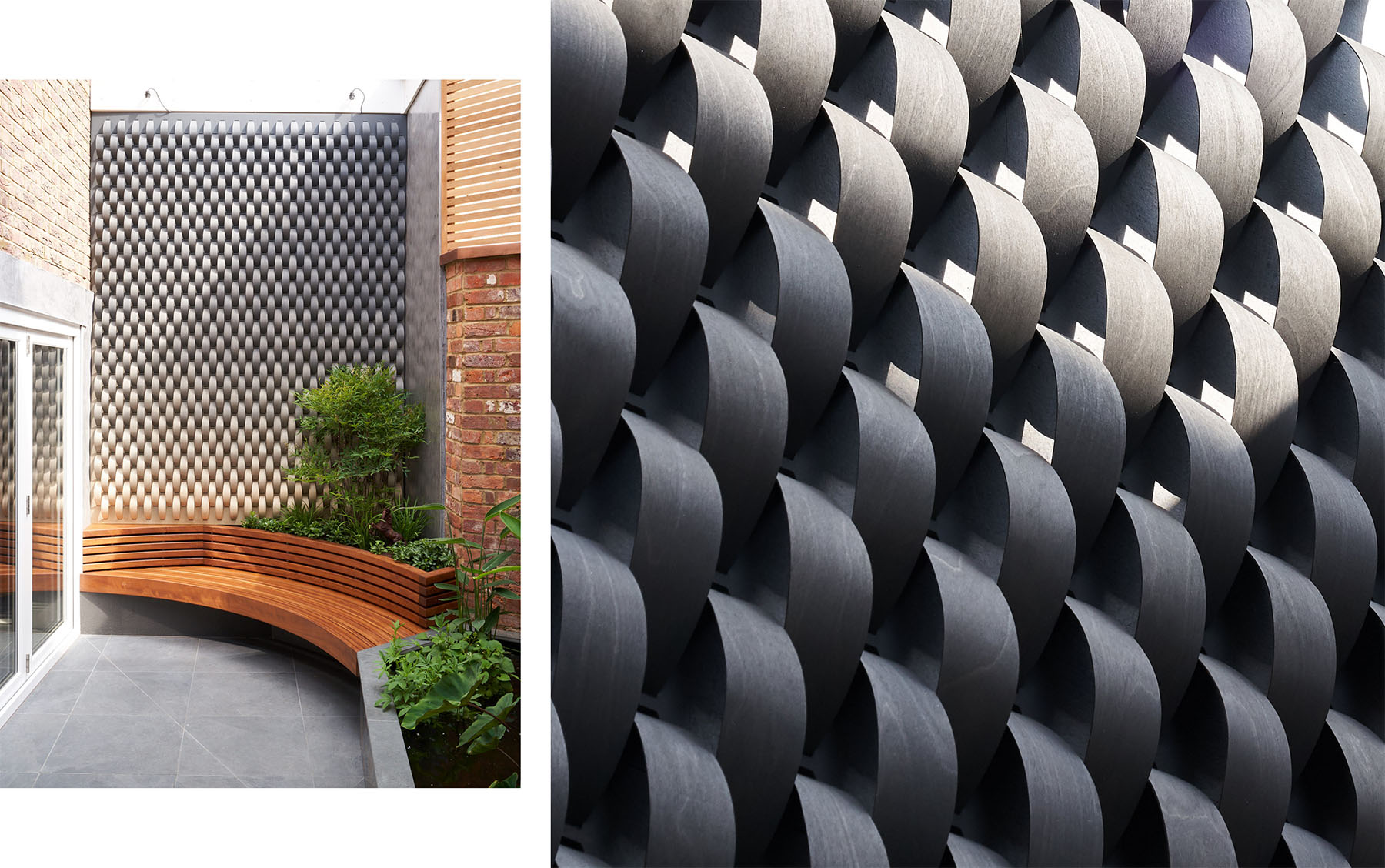
“The beauty of natural materials and biophilia can't be denied. But I think there has been a real shift to the beauty available in synthetic. The appearance of plastic has changed phenomenally due to companies like Smile Plastics, whose panels are so beautiful. When you're dealing with something that's recycled, the unique inconsistencies that you find with natural materials can also be found. And it's educating your clients to embrace that.”
Though, Emily admits, this can be a challenge. “Because it's synthetic, it's 100% recycled, so you don't know what you might get. And that's a celebrated characteristic in natural materials.
“For us, it's sharing that knowledge and helping to inspire clients to enjoy that unexpected quality in synthetics as well. And I think that appreciation is certainly starting to come about and be embraced.”
A celebration of narrative
“It is helping people to look at materials in a new light, and it is changing our perception”, agrees Roddy. “It's been drilled into us for years and years about how materials should look, the perfection of things. And I think it's really important that you're bringing in waste products and merging it with that, but in your own way and celebrating that narrative.”
At Smile Plastics, sharing the story of the products, visually, has always been a core focus. “We tend to work with plastics that were cosmetic packaging, medical packaging and food packaging and a lot of the time you can actually see the history of the waste in the material itself and the surface itself, explains Rosalie.“From the foil of yogurt pot material to text and bar codes in the cosmetic packaging. That kind of narrative is woven into the surfaces. We really embrace it. I think some companies want to avoid it at all costs. It's something that we've always wanted to embrace - that kind of material language and that narrative.”
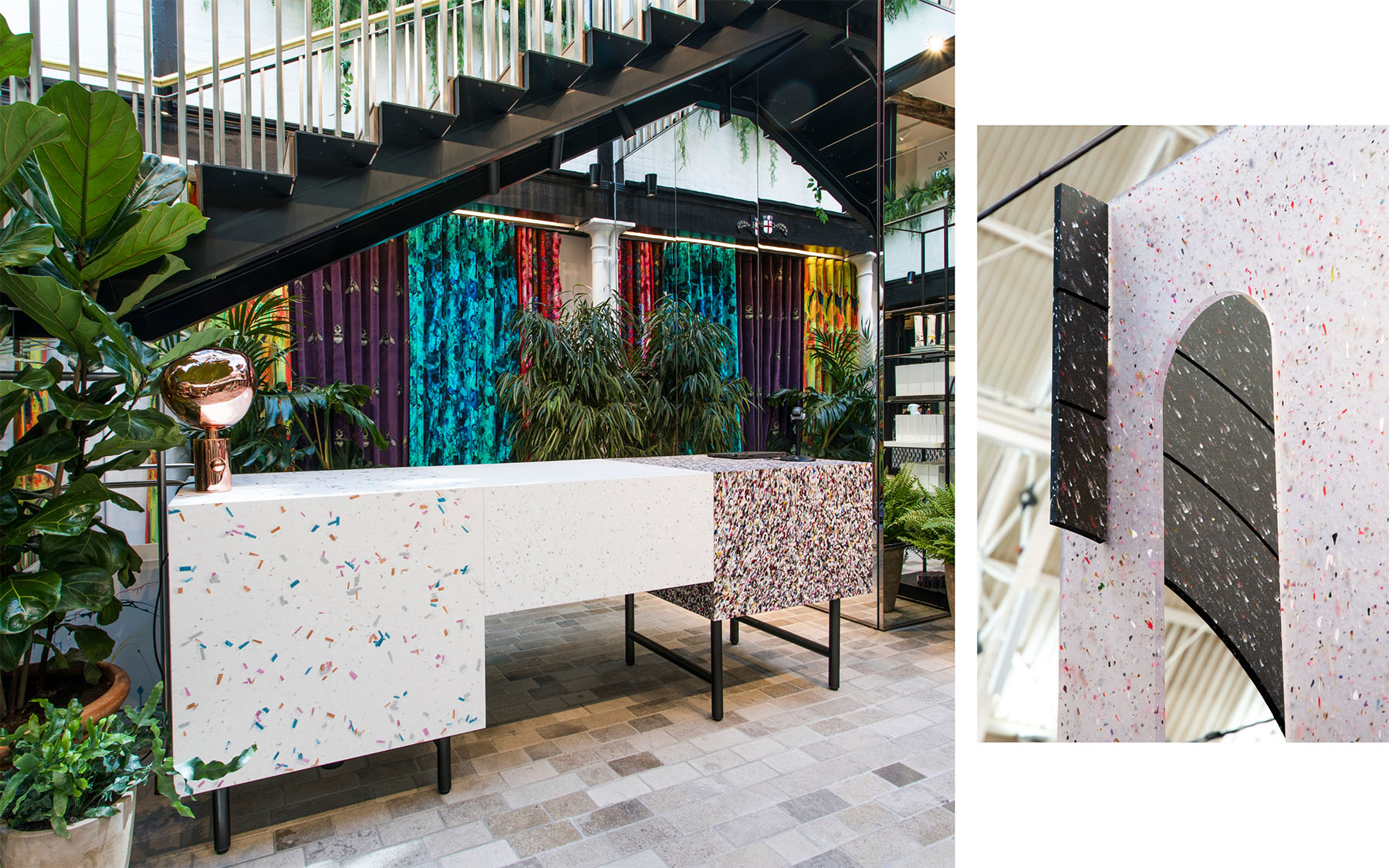
Influencing a behavioural shift
Encouraging potential clients to be open to the use of synthetic materials is one thing, but how is this then taken into specification, and responsible, sustainable use?
“When it comes to recycling plastics, we're very interested in the whole journey”, says Rosalie, “where we source the materials from, preparation, processing the materials onsite to produce the finished product. A big part of this is ‘100% recyclable’. But what does that actually look like? We actively encourage our customers to return the material at the end of its life.”
“We are using materials for applications that will be there for many years. But equally they get used for event spaces that will only be there for 3 or 4 months. We can take all of the material back at the end of it. And make it into another fantastic product. One of the ways that we can do that is because we're not de-naturing the plastic very much in the production process, which means that, in theory, we’ve got this fully circular model. It's something that we really want to build on over the next two years to make it easier for our customers to do.”
In the furniture industry, Roddy believes more could be done by way of buy-back and refurbishment. “I wish I could see more of this happening, especially in the furniture world. I know that they offer repairs and refurbishing when it gets to the end of the first life. And it's really important that when you're designing furniture, when you're designing pieces, when you're working with surfaces to really think with that second life in mind. Offering that fully circular solution for clients. It's imperative if we do want to create a kind of economy that we urgently, urgently need. A lot of people don't do it because it requires logistics. It's a financial implication, it's hassle. But it's about doing the right thing, right?”
Paul agrees to some extent, but also argues it’s not always so easy to implement: “Second life considerations are a key aspect of how we design and make. One other asset of wood is that it is very repairable, which can’t be said for most man-made materials. We have looked at buy-back schemes and rental schemes but have found it very difficult to incorporate these into our business model. We instead focus on building longevity into our products via quality manufacture, quality materials and designs that transcend trends.”
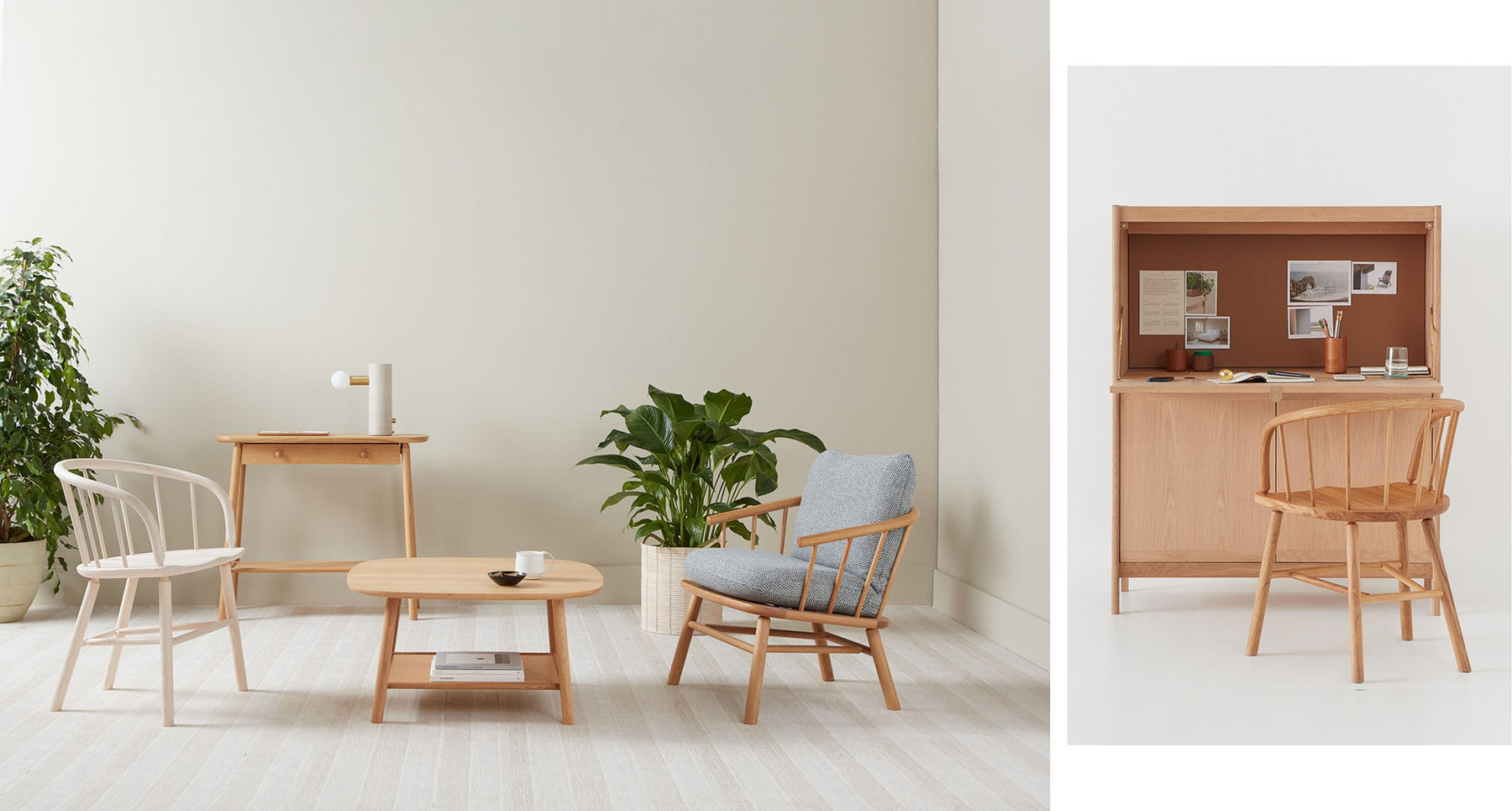
For Smile though – whose business deals in repurposing waste – a buy-back scheme is a “gold mine”. “A real challenge is to get all the raw materials supply chain set up so, that’s our gold mine as a business - we've already identified it as being incredibly valuable to us, and we believe there's an application for it in the products that we make, so why would we not want that back? The beauty of Smile Plastics materials is that they are single type materials - they're not composites of various other materials - so they can go back into the manufacturing process.”
Looking ahead
Looking longer term, whether working with synthetic or natural materials, one thing’s for sure. Designers, specifiers and manufacturers must “commit to natural, low carbon, renewable and/or recyclable materials as a matter of principle”, summarises Paul.
Adam has seen an industry shift towards this already. “Having been involved in recycling and exploring industrial ecosystems that surround waste for two decades, I've definitely seen a huge game change in industry from it being a sort of slogan with a little banner, to businesses champion and delivering practical solutions”, he says.
“Recycling and circular economy is no longer just a little flag that people point at and smile. It's a real movement that I think bigger industry is also championing in a commercial way. The communication surrounding it has grown. It's not so easy to hide behind a shroud of these little green flags. People are expected to deliver information that shows the provenance of what they're saying they do. Pretend stories just won’t wash anymore.”
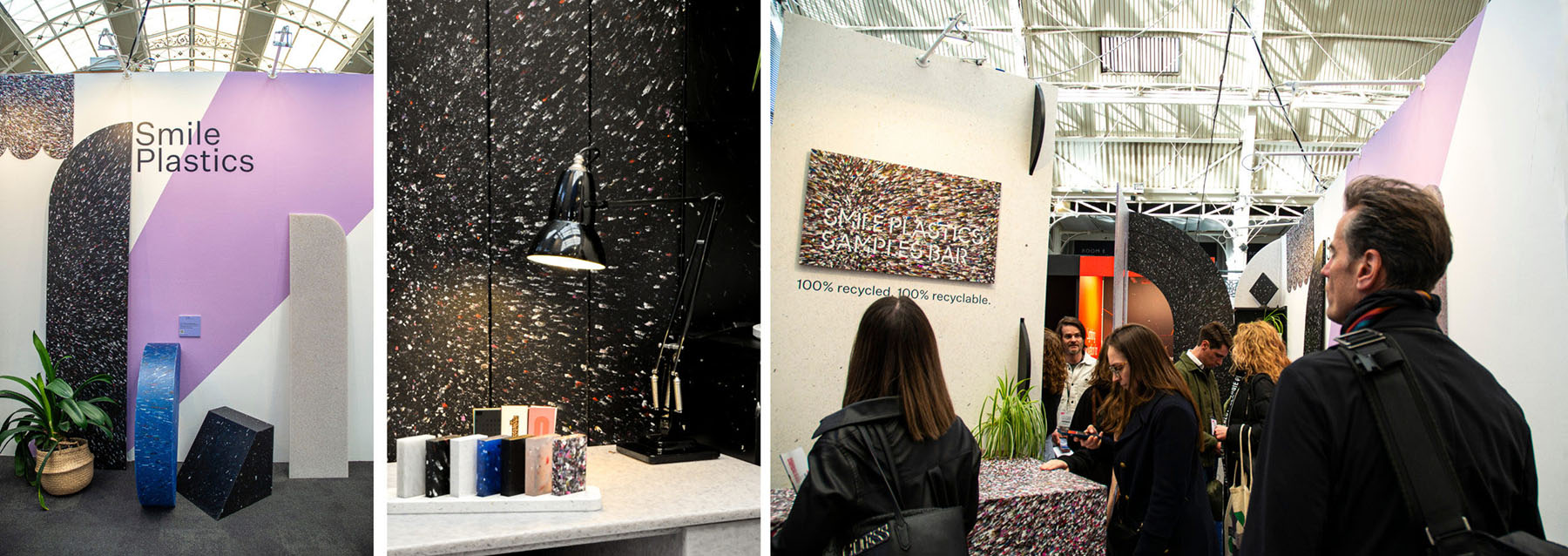
A huge thank you to Roddy Clarke and Paul De Zwart for taking part in our discussion – keep your eyes peeled for a special collaboration between Smile and This Country, launching at Clerkenwell Design Week in May.
Read more from our Plastics Unpackaged series here and join in the debate by tagging @SmilePlastics on social media.